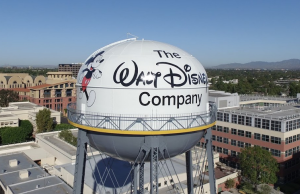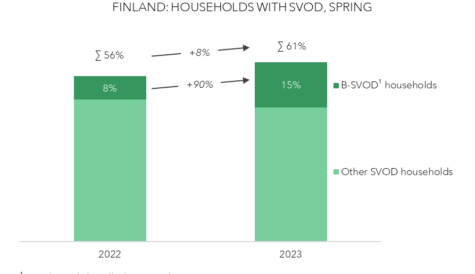
After more than 40 years of operation, DTVE is closing its doors and our website will no longer be updated daily. Thank you for all of your support.
Streaming goes back to the future
First the revolution, then the reaction. The big studios and tech companies that have plunged wholeheartedly into video streaming have now retrenched, with casualties mounting in the shape of layoffs and cancelled shows.
Disney was no exception. In February the mouse house’s Q1 financials came in below expectations, weighed down by costs associated with the company’s ambitious streaming plans. Disney’s streaming business lost US$1 billion in the quarter, and the company announced a wave of 7,000 job cuts in an attempt to deliver US$5 billion in savings.
Immediately afterwards reinstalled boss Bob Iger announced a major restructuring initiative, with the company organised into three core, collaborative business segments: Disney Entertainment, ESPN, and Disney Parks, Experiences and Products.
This was enough to see off the threat of a confrontation with activist investor Nelson Peltz, who had been seeking a position on the board.
This week, Iger reflected on Disney’s experience in streaming at the Morgan Stanley TMT conference in San Francisco.
Despite the realisation that streaming has yet to deliver the kind of returns studios became accustomed to with the old model of distributing channels via pay TV affiliates and selling content rights elsewhere to complement this, Iger said he was still “extremely bullish on some of our streaming products, notably Disney+”.
However, he said, Disney had to “better rationalise our costs”. And it has to keep those costs down while still participating in the race for subscribers that fuelled content cost inflation in the first place.
Lesson one identified by Iger is to tackle pricing.
“I think we were off in terms of our pricing strategy and we’re now starting to learn more and adjust accordingly,” he said.
That means avoiding a race to the bottom by offering free trials and introductory discounts that invite users to binge and look around to rivals for an alternative fix after the free month is over.
Lesson two is a need to bring the business of creating content and the business of getting money from selling it together. “I believe there needsto be a direct connection between what’s being sent and what’s being earned,” said Iger.
That includes focusing marketing on content rather than platforms, which Iger said had not helped Disney reach its goals.
Lesson three: focus on content with global appeal and not so much on stuff that is strictly local. “Territory managers for Disney+ were leaning into what they were producing locally, which has some value, but perhaps not as much as what is produced for global consumption,” said Iger.
Iger also said that Disney would carefully consider what to do about Hulu, the mostly ad-supported streamer in which it holds a two thirds stake with an option to buy the rest from Comcast.
He said Hulu was “a solid platform” and “a very attractive platform for advertisers” but noted that there is a lot of uncertainty in the market. “The environment is very, very tricky right now and before we make any big decision about our level of investment and commitment to that business we want to undertand where it could go,” he said.
Other lessons? Disney will “concentrate on quality, not volume”, and it will pull back from its aggressive hoarding of its own properties in favour of a more nuanced approach to windowing and licensing. Iger said that the audiences for linear TV and streaming remained distinct, with the average linear viewer much older than streaming consumers.
That switch from an all-or-nothing drive to bet the farm on streaming to a more variegated strategy underlines the fact that the streaming revolution has entered the equivalent of the Thermidorian Reaction. The world isn’t reverting to the ancien regime exactly, but the notion that the business models that dominated video distribution in the past had wholly been jettisoned now seems premature. The streaming-centric world of tomorrow may bear a closer resemblance to the dual-revenue world of affiliate fees and advertising revenue that seemed to have passed away.



